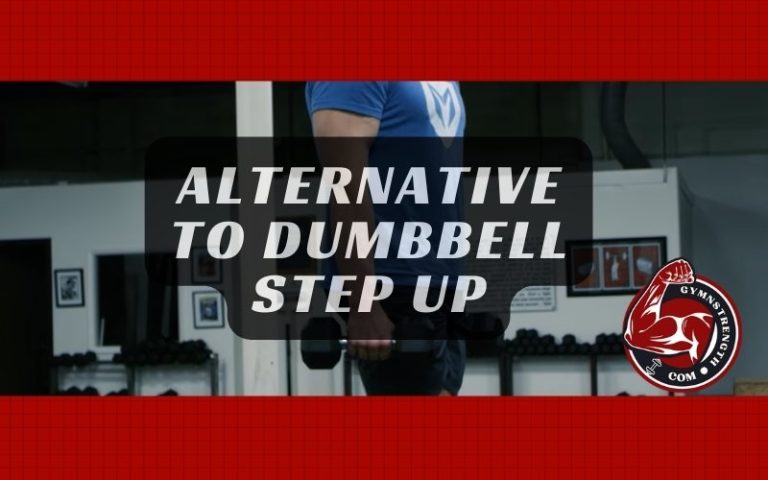How to Avoid Common Weightlifting Injuries

To avoid common weightlifting injuries, focus on mastering proper form to reduce strain. Always warm up with dynamic stretches before lifting and listen to your body when selecting weights. Gradually increase weight while ensuring it doesn’t compromise your technique. Don’t skip rest days, as recovery is essential for muscle growth. Consider using safety equipment and spotters for heavier lifts. There are more tips and strategies that can help you stay safe and get the most out of your workouts.
Understanding Common Weightlifting Injuries

When you lift weights, it’s important to be aware of the common injuries that can occur, as they can sideline your progress and lead to longer recovery times. Injury statistics show that overexertion and improper technique are among the leading causes of weightlifting injuries. Sprains, strains, and tendonitis are frequently reported, often resulting from lifting too heavy too soon or neglecting warm-ups.
Another common cause is muscle imbalances, which can create undue stress on certain areas of your body. For instance, a weak core can lead to back injuries, while poor shoulder strength may result in rotator cuff issues. By understanding these risks, you can take proactive measures to minimize your chances of getting hurt. Always listen to your body, progress gradually, and consider seeking guidance from a qualified trainer to guarantee you’re lifting safely.
Importance of Proper Form
Mastering proper form is vital for safe and effective weightlifting. When you lift with the correct technique, you reduce the risk of injury and maximize your results. Pay attention to alignment cues, like keeping your knees in line with your toes and your back straight. These cues help guarantee your body is positioned correctly throughout each movement.
Regular posture checks are also important. Before starting a lift, take a moment to assess your stance and grip. Are your shoulders retracted? Is your core engaged? Small adjustments can make a big difference in preventing strain.
Don’t rush through your lifts; focus on controlled movements. This not only helps in maintaining proper form but also builds muscle effectively. Remember, it’s always better to lift lighter weights with correct form than heavier weights that compromise your safety. Prioritize your technique, and your body will thank you in the long run. Additionally, maintaining proper technique while exercising can help strengthen muscles around the knees and prevent injuries.
The Role of Warm-Ups in Injury Prevention

In addition to maintaining proper form, incorporating warm-ups into your routine is a key strategy for preventing injuries. A well-structured warm-up prepares your body for the demands of weightlifting, reducing the risk of strains and sprains. Start with dynamic stretching, which involves moving your muscles through their full range of motion. This not only increases flexibility but also gets your blood flowing, enhancing your overall performance.
Focus on muscle activation exercises that target the specific muscle groups you’ll be using. For instance, if you’re planning to lift weights for your legs, perform squats or lunges to engage those muscles effectively. By warming up properly, you’ll improve your coordination and strength during your workout. Remember, taking just a few extra minutes to warm up can make a significant difference in your safety and performance. Prioritize your warm-up routine to guarantee a more enjoyable and injury-free weightlifting experience.
Choosing the Right Weight
Choosing the right weight is essential for avoiding injuries during your workouts. You need to assess your personal strength levels and progress gradually to prevent overexertion. By using proper weight selection techniques, you can guarantee a safer and more effective lifting experience.
Assess Personal Strength Levels
Before you hit the gym, it’s important to evaluate your personal strength levels to guarantee you’re lifting the right weight. Start with a personal fitness assessment to understand your current capabilities. Use strength evaluation techniques like bodyweight exercises or resistance bands to gauge how much weight you can handle safely. It’s vital to listen to your body; if you struggle with a weight, it’s a sign you should lower it. Remember, lifting too heavy can lead to injuries, so aim for weights that challenge you without compromising your form. By accurately evaluating your strength, you can create a solid foundation for your workouts, ensuring you progress safely and effectively. Stay smart, and prioritize safety to enjoy your fitness journey!
Gradual Weight Progression
As you progress in your weightlifting journey, gradually increasing the weight you lift is essential for building strength while minimizing the risk of injury. This approach, known as progressive overload, helps your muscles adapt safely. Here are some tips for choosing the right weight increments:
- Start light: Begin with a weight that allows you to maintain proper form throughout your sets.
- Increase gradually: Aim for a 5-10% weight increase once you can complete your reps comfortably without strain.
- Listen to your body: If you feel pain or excessive fatigue, it’s better to hold off on increasing the weight.
Proper Weight Selection Techniques
Selecting the right weight for your lifts can make all the difference in your training experience and results. To guarantee safety, you should use effective weight selection strategies. Start by determining your one-rep max (1RM) and use that to find appropriate weight ranges for your exercises. For strength training, aim for 70-85% of your 1RM, while for endurance, stick to 50-70%. Always listen to your body; if a weight feels too heavy or compromises your form, lower it. Incorporate lighter weights for warm-ups and focus on technique before increasing resistance. By following these guidelines, you’ll reduce your risk of injury and enhance your performance, allowing you to lift safely and effectively.
The Significance of Rest and Recovery
Rest and recovery are just as essential as your weightlifting sessions. Without proper rest days and effective recovery techniques, your muscles can’t repair and grow, increasing your risk of injury. Plus, getting enough sleep plays a key role in how well your body recovers, so don’t underestimate its importance.
Importance of Rest Days
While many weightlifters focus on pushing their limits, it is vital to remember that rest days play an important role in your overall progress. Neglecting to take time off can lead to injuries and hinder your gains. Here are some key rest day benefits you should consider:
- Muscle Recovery: Allowing your muscles to repair helps prevent overuse injuries.
- Injury Prevention: Rest days reduce fatigue, lowering the risk of strains and sprains.
- Mental Refresh: Taking a break can boost your motivation and focus for future workouts.
Incorporating effective recovery strategies, like hydration and nutrition, during your rest days will enhance these benefits. Prioritizing rest isn’t a sign of weakness; it’s a significant aspect of a successful weightlifting journey.
Active Recovery Techniques
Because incorporating active recovery techniques can greatly enhance your overall performance, it’s essential to understand their role in your weightlifting regimen. Engaging in light cardio, like walking or cycling, increases blood flow and helps your muscles recover without overexerting yourself. You should also consider foam rolling; it alleviates muscle tightness and improves flexibility. Active stretching can be beneficial too, as it promotes mobility and prepares your body for future workouts. Additionally, massage therapy can relieve tension and reduce soreness, making it a valuable tool in your recovery arsenal. By integrating these techniques into your routine, you’ll not only recover more effectively but also minimize the risk of injury, ensuring safer and more productive weightlifting sessions.
Sleep and Muscle Recovery
How essential is sleep for muscle recovery? It’s critical! Quality sleep not only enhances your muscle repair but also reduces the risk of injuries. When you prioritize sleep hygiene, you give your body the chance to recover effectively. Here are three key benefits of good sleep for muscle recovery:
- Hormonal Balance: Sleep helps regulate hormones like testosterone and cortisol, which are important for muscle growth and repair.
- Increased Performance: Well-rested muscles perform better, improving strength and endurance during your workouts.
- Injury Prevention: Adequate sleep reduces fatigue and enhances focus, decreasing the likelihood of accidents or strains.
Listening to Your Body: Recognizing Pain vs. Discomfort
Understanding the difference between pain and discomfort is essential for safe weightlifting, as ignoring your body’s signals can lead to serious injuries. Pain indicators usually signify an injury or potential harm, while discomfort signals often indicate muscle fatigue or exertion. It’s vital to differentiate between the two to prevent unwanted setbacks.
Here’s a quick reference to help you identify the differences:
| Pain Indicators | Discomfort Signals |
|---|---|
| Sharp or stabbing sensations | General soreness or tightness |
| Persistent pain | Mild fatigue |
| Pain that worsens with activity | Temporary discomfort during a lift |
| Swelling or bruising | Muscle fatigue after workout |
| Pain that limits movement | Aching that fades with rest |
Always listen to your body. If you experience pain, it’s best to stop and assess the situation. Prioritizing safety will optimize your weightlifting journey.
Incorporating Flexibility and Mobility Work

While you focus on building strength through weightlifting, incorporating flexibility and mobility work is just as essential for preventing injuries and enhancing performance. Neglecting this aspect can lead to muscle tightness and decreased range of motion, which increases your risk of injury.
Incorporating flexibility and mobility work is vital for injury prevention and peak performance in weightlifting.
Here are three effective strategies to incorporate into your routine:
- Dynamic Stretching: Prior to lifting, engage in dynamic stretches to warm up your muscles and improve blood flow. This can include leg swings and arm circles.
- Foam Rolling: Use a foam roller post-workout to release tension in your muscles, which helps alleviate soreness and promotes recovery.
- Mobility Drills: Spend time on specific mobility exercises targeting areas like hips and shoulders, ensuring your joints move freely and efficiently during lifts.
Utilizing Spotters and Safety Equipment
In addition to flexibility and mobility work, utilizing spotters and safety equipment is essential for minimizing the risk of weightlifting injuries. Spotters can provide critical support, especially during heavy lifts. When using spotter techniques, make certain that your spotter knows your goals and understands how to assist you effectively. This way, you can lift with confidence, knowing there’s someone to help if you struggle.
Safety gear, like weightlifting belts and wrist wraps, can also protect your body during intense workouts. A proper belt can support your back, while wrist wraps help stabilize your joints. Confirm your equipment is in good condition before each session, as worn-out safety gear can lead to accidents.
Developing a Balanced Workout Routine
To prevent injuries and promote overall strength, developing a balanced workout routine is essential. This means incorporating various exercises that target different muscle groups and allow for recovery. Here are three key elements to contemplate for balanced training:
Developing a balanced workout routine is crucial for injury prevention and overall strength enhancement.
- Include Compound Movements: Exercises like squats, deadlifts, and bench presses work multiple muscle groups, enhancing strength and stability.
- Incorporate Isolation Exercises: Don’t forget to add exercises like bicep curls or tricep extensions. These help you focus on specific muscles and improve overall muscle balance.
- Ensure Workout Variety: Change your routine regularly to avoid overuse injuries. Mix in cardio, flexibility, and strength training to keep your workouts engaging and safe. Additionally, integrating low-impact exercise like skipping can further enhance cardiovascular fitness while being easy on the joints.
Frequently Asked Questions
How Can Nutrition Impact Weightlifting Injury Recovery?
Nutrition plays a vital role in your weightlifting injury recovery. By focusing on protein timing, you can enhance muscle repair and growth, ensuring you’re fueling your body at the right moments. Don’t underestimate hydration strategies, either; staying properly hydrated helps reduce inflammation and supports overall recovery. When you combine these elements, you’re not only speeding up your healing process but also setting yourself up for safer and more effective workouts in the future.
Should I Lift Weights if I Have a Previous Injury?
Oh sure, lifting weights with a previous injury is like inviting a bull into a china shop! You definitely should consider your rehabilitation techniques first. If you’ve healed and your doctor gives the thumbs-up, focus on injury prevention strategies. Start slow, listen to your body, and maybe even consult a professional trainer. It’s all about safety, not showcasing your strength. Your muscles will thank you, and so will your future self!
What Are the Signs of Overtraining in Weightlifting?
When you’re weightlifting, it’s essential to recognize the signs of overtraining. You might experience notable fatigue signs, like persistent tiredness or lack of motivation. If you notice a performance decline, such as reduced strength or slower recovery times, it’s a red flag. Ignoring these symptoms can lead to injuries or burnout. Make certain you listen to your body and give yourself adequate rest to guarantee safe and effective training.
Can Stress Contribute to Weightlifting Injuries?
Yes, stress can definitely contribute to weightlifting injuries. When you’re stressed, your focus and mental resilience can wane, leading to poor form and careless lifting. Incorporating stress management techniques, like mindfulness or breathing exercises, can help you stay centered and improve your performance. Prioritizing your mental well-being not only enhances your workouts but also keeps you safer while lifting. Remember, a calm mind leads to a stronger, more effective body.
How Often Should I Change My Workout Routine to Prevent Injuries?
You should change your workout routine every 4 to 6 weeks to keep your muscles challenged and prevent overuse injuries. Routine variation not only helps with muscle growth but also keeps your workouts interesting. By adjusting your workout frequency, you can allow your body to recover and adapt, reducing the risk of injury. Remember, listening to your body is essential; if you feel fatigued, it’s okay to take a step back and reassess.





